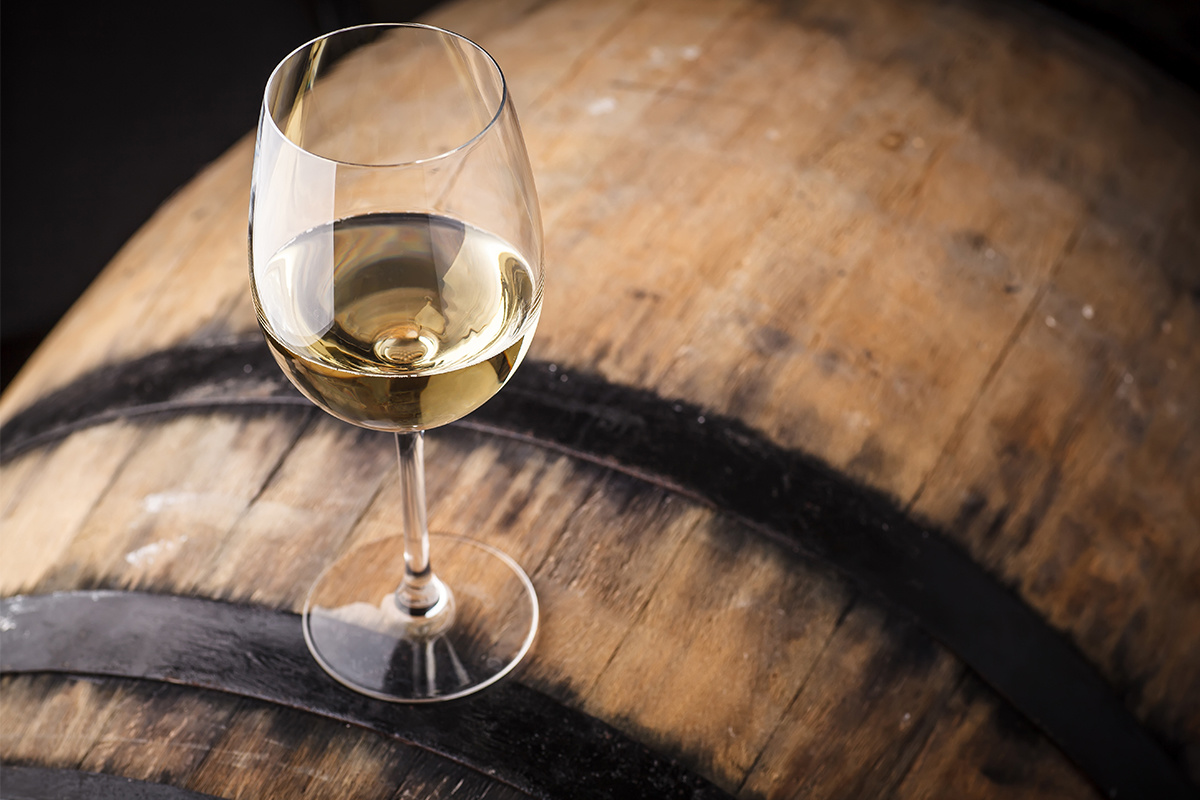Oak-Aged White Wines
- Posted on
- 0

The majority of white wines sold throughout the world are fermented and aged in stainless steel or other inert vessels, to preserve the fruit and other aromas and flavors. The grapes are harvested, fermented at a cool temperature, to retain their freshness, and then clarified and bottled, all in less than a year.
Winemakers may choose to barrel-ferment, or barrel-age a white wine in order to change the flavor profile, texture, and complexity of the wine. The white wine that is most often seen aged in oak is Chardonnay. Chardonnay is considered a non-aromatic grape, as its aromas are usually basic orchard fruit, like apple and pear, and perhaps some citrus notes. Barrel aging a wine grape like Chardonnay in new oak barrels will add tannins, impart flavors from the barrel itself, and introduce oxygen into the wine, changing its taste and texture.
Tannins in wine normally come from the skins and seeds which aren’t usually involved in white winemaking. Aging a white wine in newer oak barrels will add tannins to the wine which acts as a natural preservative and helps the wine age longer.
Barrels are made from different species of oak. The two main sources for barrels in the world are France and the United States. Barrels from France and elsewhere in Europe are of species Quercus petrea, and barrels from America are Quercus alba. French oak tends to be denser, with closer spaced rings, which means that less flavor from the oak flavor and less oxygen gets imparted into the wine than from American oak. Wine aged in French oak tends to be more elegant, and those aged in American oak more assertive.
Flavors imparted from new French oak include vanilla bean, smoke, hazelnut, and savory spices. A new American oak barrel will add flavors of vanilla, coconut, fresh dill, and sweet spices to a wine. Once barrels have been used about four times, they are considered neutral in that they no longer have flavors left to impart into the wine. Neutral barrels still initiate changes to the wine within by reducing acidity and allowing small amounts of oxygen to come into the wine via the oak grain, since barrels are porous. To temper the amount of flavor imparted into the wine, a winemaker may age some wine in new and some wine in neutral barrels, and then blend them together before bottling.
White wines that will be aged in oak are sometimes fermented in oak. This allows the wine to be aged sur lie. Sur lie is a French term for lees aging. The lees are the leftover dead yeast cells that remain after fermentation concludes. While the yeast cells have fully completed their job, they are still going through a process of self-digesting, called autolysis. When wine is left in a barrel with the lees, along with periodically stirring them up into the wine called bâtonnage, the wine will pick up yeasty dough-like aromas and flavors and have an increased texture on the palate.
California Chardonnays were always thought to be oak-aged, but that is just one style of winemaking. What other white wines are aged in oak? Some Sauvignon Blanc from Sancerre in the Loire are oak-aged, but in large barrels which imparts fewer oak flavors, as less wine is in contact with the oak, due to the barrel size. White Bordeaux wines made from Sauvignon Blanc, Semillon, or a combination of both may see some time in oak. White wines from Rioja in Spain are oak-aged, usually in American oak. Chablis wines will often spend some time in oak to increase the texture and impart non-fruit flavors to the wine.
Oak aging in white wine mutes the fruit aromas, darkens the wine a bit due to oxidation, concentrates flavors, adds texture and weight, and potentially imparts flavors from the barrel itself. If you are interested in oak-aged white wines, look for barrel fermented, barrel aged, sur lie aging or descriptions that include vanilla, coconut, nuttiness, or spice in the tasting notes.

Comments
Be the first to comment...